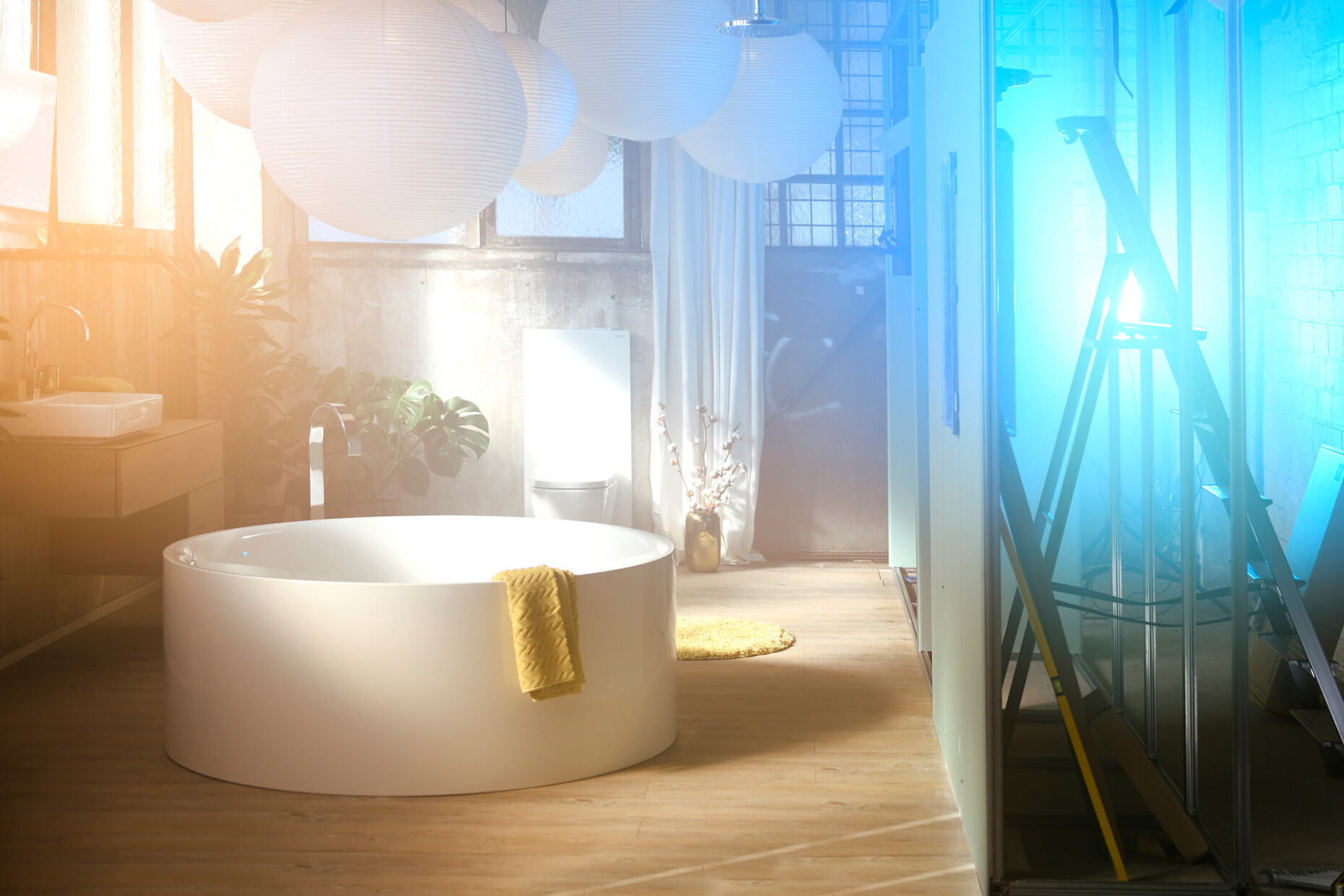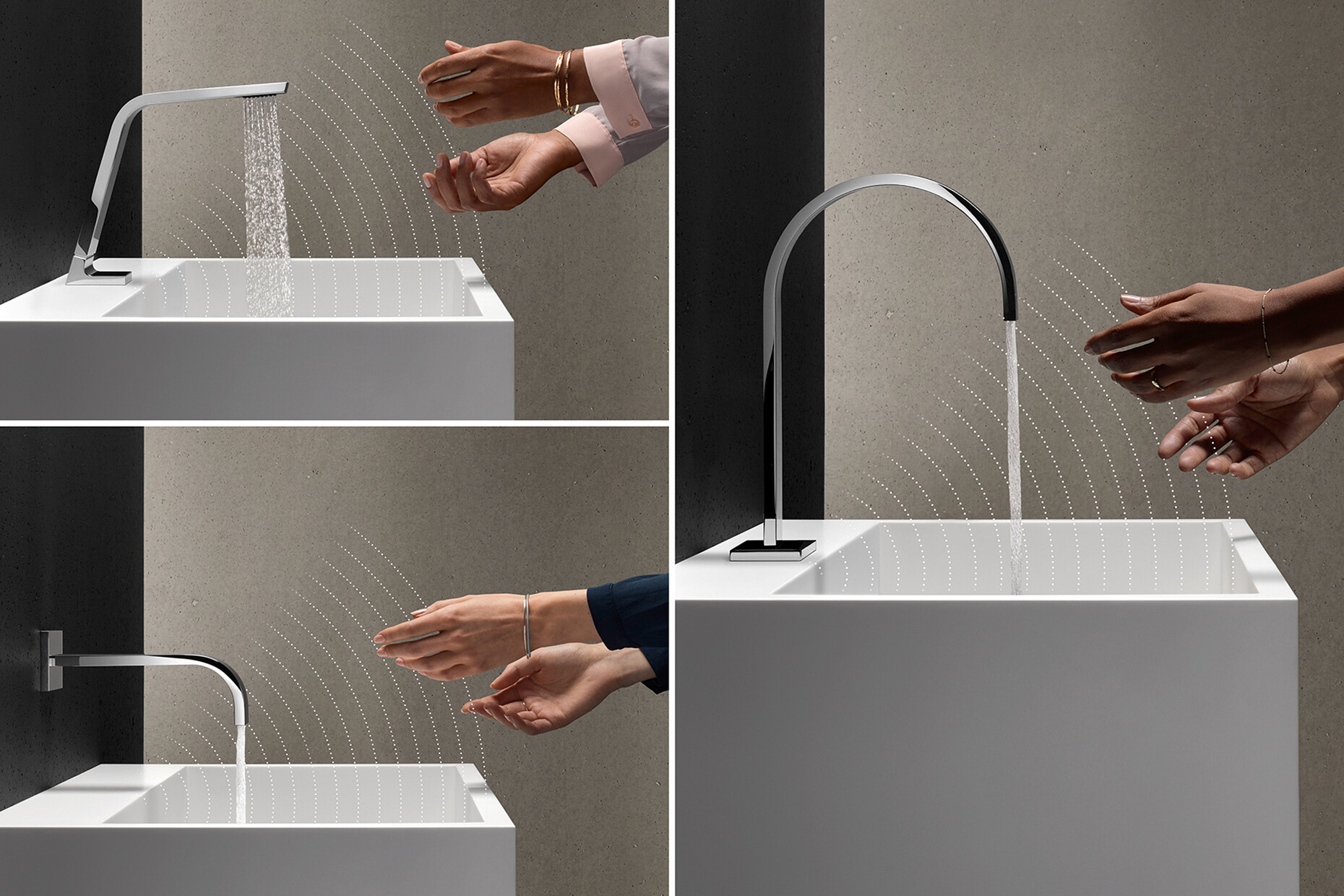ISH
Smart Trends
Much is certainly not usual at the moment. This also holds true with a view to the world’s leading trade fair for HVAC + water, the ISH, which in 2021 will be taking place in digital form for the first time. Intelligent matchmaking, allowing for networking between German and international manufacturers and their clients, will make it possible to cultivate contacts and present innovations. Leading manufacturers of the German and international sanitation industry will be presenting their companies and products in the “ISH Water” segment. The accompanying event program will focus among other things on the topics of “Smart-Home Solutions” and “Bathroom Hygiene”. What’s more, based on these topics, the “Pop up my Bathroom” special show will be highlighting the long-term trends: the “Green Bathroom”, “Living Bathroom” and “Smart Bathroom”.
Alexander Russ: Which new developments are there when it comes to “Smart- home solutions” in the sanitary sector?
Jens Wischmann: As we know, the term “smart home” has been around for a while now. What we’ve seen in the meantime is that implementing the new technology involved is not always as fast as we initially thought it would be. After all, trends are movements towards change that we may be able to analyze and describe, but that at times need a little while before they catch on. And sometimes, once they do, things suddenly accelerate. That’s what’s happening now, where we are seeing touch-free fittings, networked digital systems in drinking water technology, or sensors protecting users in the bathroom becoming the new standard almost overnight.
Nevertheless, architecture is a slow discipline and ideally a building should have a long lifecycle. By contrast, IT is very fast-moving. How do we best reconcile the two?
Jens Wischmann: We have to ensure that the systems are backward compatible and functional as well as easy to operate over a longer period of time. I don’t see this issue as having been entirely resolved, I believe it presents a challenge. Nevertheless, in the future we will see more applications using smart technology because the solutions for the points of intersection have been improved and the whole thing can be integrated with greater ease.
Could you give an example for an area of application?
Jens Wischmann: One example would be the area of “health”. Smart technology can be applied in what is called “Ambient Assisted Living” as an aid to older or disabled persons in their everyday life. For example, it can be integrated into an emergency call system that enables the user to hit a panic button if they have a fall. It bears remembering that the risk of this happening is especially great in the bathroom. Certain lighting scenarios controlled through smart technology can further aid orientation in the bathroom. And finally, digitization as part of the drinking water installation allows for automatically cutting off water lines.
The topic of lighting plays an important part in the smart home independently of “Ambient Assisted Living”, too. Which developments are there in the bathroom segment?
Jens Wischmann: Nowadays, people no longer just want bathrooms to be functional, but aesthetic, too. That’s why lighting planning, which used to be primarily focused on the living areas, has now arrived in the bathroom, too. For example, I can dim my LED lights or create different moods through colored light and thus stage the space in a multitude of ways. As smart technology can now also be found in the mirror cabinets manufactured today, it should be an inherent part of all new bathroom planning. These cabinets already have lighting systems integrated into them that make various scenarios possible.
What about the topic of water?
Jens Wischmann: When it comes to water, smart technology is often employed but you don’t notice this because it is tucked away behind a wall. This is an area that is often overlooked. For example, smart technology can prevent stagnation in the pipes. After all, drinking water needs to be in permanent flow. This plays a role especially in the public sector, for example in hospitals. If certain segments are not utilized to their full capacity and the water is stagnant, hygiene problems may arise. Modern flushing systems based on smart technology can remedy this problem by regularly rinsing the pipes. At the same time, they provide protection against leakage that stops water from leaking out in places where you certainly do not want it.
You just mentioned the topic of hygiene. What is the situation with fixtures and touchless systems?
Jens Wischmann: The topic has gained a great deal of importance through the pandemic, especially in the public sphere. Various technologies such as infrared, ultrasound or movement sensors come into play there. By now, the fixtures fitted with this technology also have a delicate and attractive design. In future, there will generally be more electricity in the bathroom, for example in order to power a washlet. Incidentally, the washlet is a trend I believed would catch on much quicker in Germany than it in fact has – but this seems to be happening now.
The topic of “drinking water hygiene” and the trend towards the “smart bathroom” will also play a role at this year’s ISH: Can you tell us a little about this?
Jens Wischmann: We are holding a special show called “Pop up my Bathroom”, which will address the respective topics in a daily live show. We will also be focusing on current trends as part of the format. Alongside the trends “Green Bathroom” and “Living Bathroom” we will be looking at the trend “Smart Bathroom” and the connected topic of “drinking water hygiene”. Both will be addressed on March 23 and 24 through presentations and discussions with the industry intended to show what the current developments look like. And then there’s also an “ISH Building Forum” that will elucidate the technical aspects on which all of these are based.









